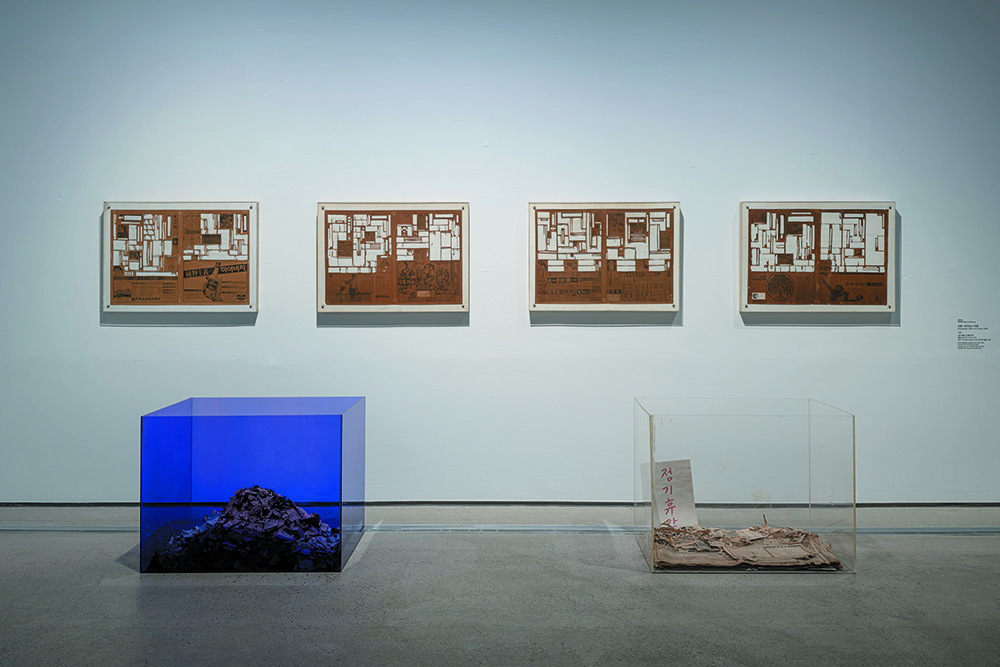SPACE August 2023 (No. 669)

Installation view of Newspapers: After 1st of June, 1974 (1974) by Sung Neung Kyung / Image courtesy of MMCA
How did the so-called ‘avant-garde art’ develop in Korean art history? Having embraced the postmodern and post-media movements that emerged across the world in the 1960s, as an attempt to break with the artistic principles of previous generations, Korean art communities sought new artistic expression in various ways in order to turn away from formal categorisation under the name of experimental art. ‘Only the Young: Experimental Art in Korea, 1960s-1970s’, which ran until July 16 puts 29 young artists who were at the forefront of Korea’s experimental art movement in the 1960s – 1970s under the spotlight, while also contemplating the artists seeking Korean and individual artistic identities amidst the great transformation post the Korean War. Divided into a total of six sections, the exhibition introduces various aspects of experimental art from the late 1960s, beginning with ‘Declaration of the Youth, Transformation of the Era’. Representative works include Kiss Me (1967), an early feminist work by Jung Kangja, and Transparent Balloons and Nude (1968) by Kang Kukjin, Jung Kangja, Chung Chanseung. Subsequent sections centre on representative works of young artists from the period, along with the works of AG (Korean Avant-Garde Association, 1969 – 1975), and ST (Space&Time, 1971 – 1981). ST is an avant-garde art organszation that studies eastern and western theories in an integrated way and expresses them in various ways, such as through works of photography, objects, actions, and events. The final section, ‘Young Artists and the Biennial at Home and Beyond’ showcases works from biennales overseas, which served as an opportunity to view Korean experimental arts from an international perspective. Beginning at the National Museum of Modern and Contemporary Art, Korea (MMCA), Seoul, the exhibition will be held sequentially at Solomon R. Guggenheim Museum from Sep. 1 and at the Hammer Museum, Los Angeles, in Feb. 11 next year, serving as an opportunity to promote Korean experimental art in the 1960s and 1970s worldwide. by Park Jaea





